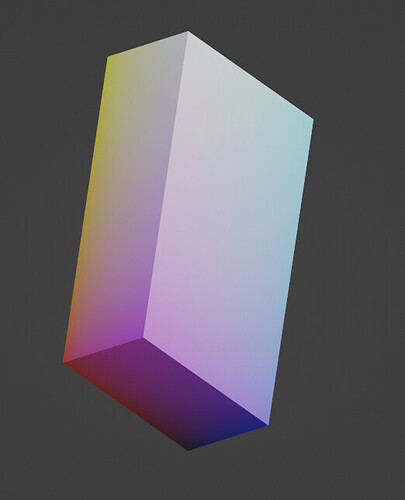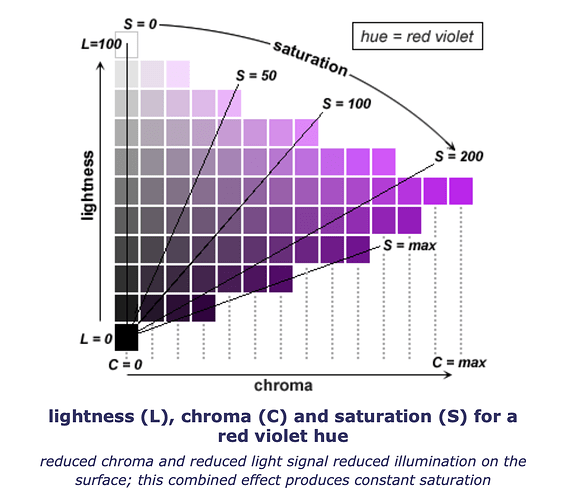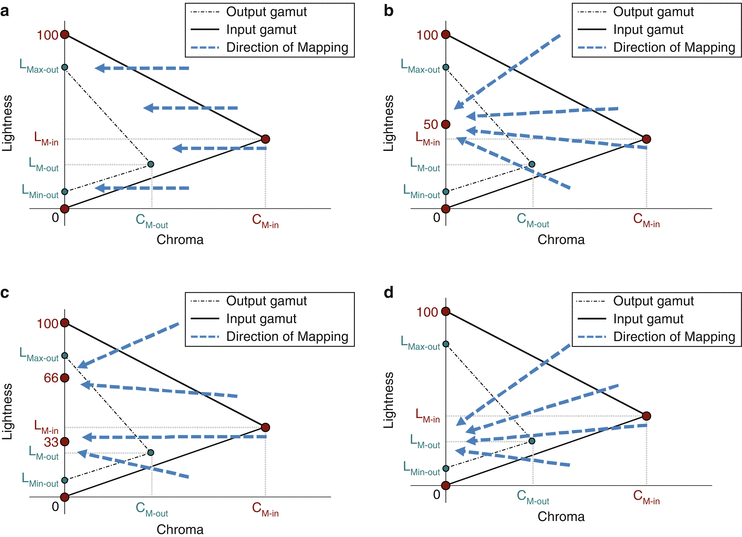I was mulling over this last night. In a space which looks like for example sRGB, but white is only 0.7 times what it is normally, the green primary is brighter than the brightest achromatic stimulus, which would certainly lead to some confusing results. I think the key thing here is that I personally consider differences in hue as ‘not an option’ so any input value would be constricted to the plane of equal hue (changing brightness and saturation). In this situation, if there was a very bright, moderately saturated green, I think it would make sense to increase saturation in order to represent higher brightness.
Going back to traditional media, this would be like giving a painter a black canvas, lots of bright, saturated paints, and a grey, but no white. It would be interesting to see what sorts of artworks come out of that - I have a feeling many might use the saturation (which carries with it the ability to express brightness) moreso than if they had access to white paint.
I also agree that even when achromatic isn’t brighter than any particular primary, there may be benefit in desaturating, but I think at that point we’d be leaning heavily on learned aspects of image production. If a bright red light goes dark grey in the middle, as compared to being a flat red, one thing we gain is greater ability to express tonality (variation in brightness, in this case specifically in regions outside of the target gamut) since we have a new axis to vary on (red to grey), but we have to rely on the viewer to understand that the dark grey means ‘brighter than the red’.
Fortunately with additive colour we’ll never need to account for such a space.
As much as display-dependent is a naughty word here, there is a certain aspect of this that necessarily has to be display (read: output gamut) dependent. Take the overly-aggressive desaturation of yellow. This is caused by the blue primary adding very little to the luminance of the resulting signal - said differently, red + green is very nearly as bright as white in spaces where the blue primary is not very luminous. Yellow feels like it desaturates aggressively because for 100% of the saturation of the original colour, you only receive a tiny amount of additional luminance. Where does display-dependency come in here? If your display has an unusually luminous (too green, not saturated enough) blue primary, then the desaturation of yellow becomes less aggressive, and counteracting for it in a fixed way would cause the opposite problem.
To illustrate, here is a side view of a rec.709 cube where each primary is scaled by its luminance and rotated to have the achromatic axis point straight up. Here you can see just how close yellow is to white in terms of luminance. Just be aware I threw this together now so it almost certainly has some problems.
![]() this is my point
this is my point


 ).
).
